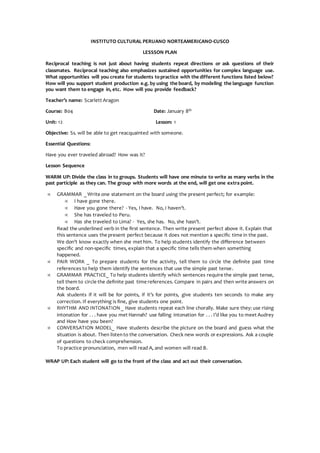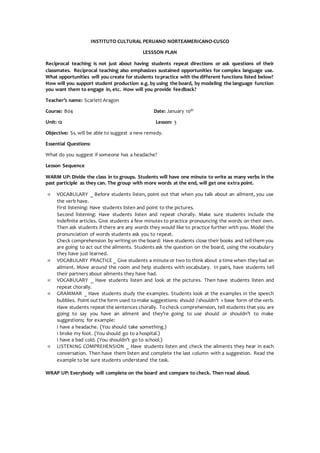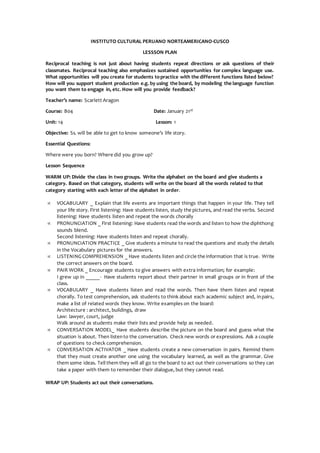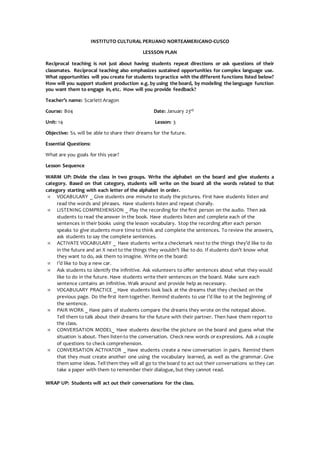This lesson plan outlines activities for three English lessons focusing on reacquainting someone, showing concern about an injury, and suggesting a new remedy. Each lesson includes a warm-up activity, vocabulary exercises, grammar explanations and practice, listening comprehension activities, pronunciation drills, conversation models, and a wrap-up. The teacher provides structured support and feedback at each stage to help students improve their English language skills through sustained practice of complex language functions.
















